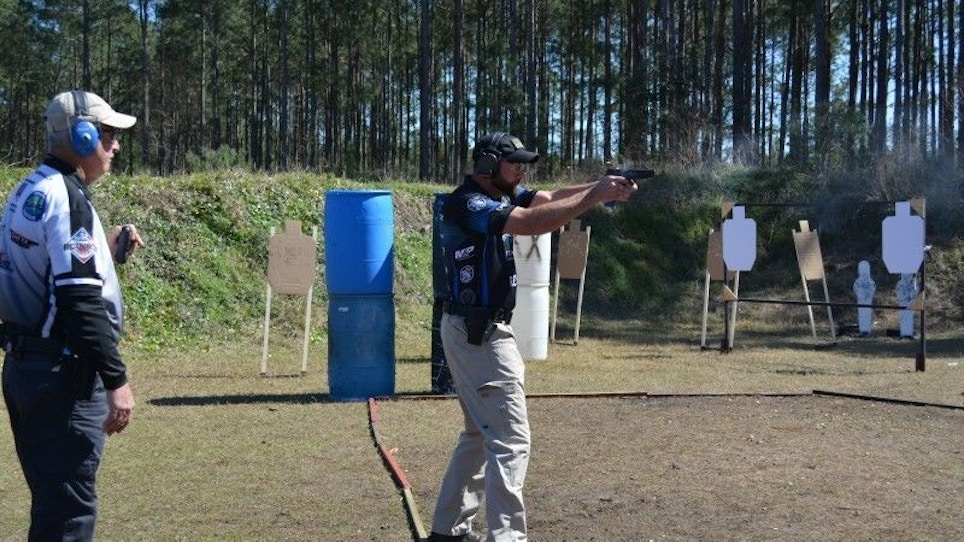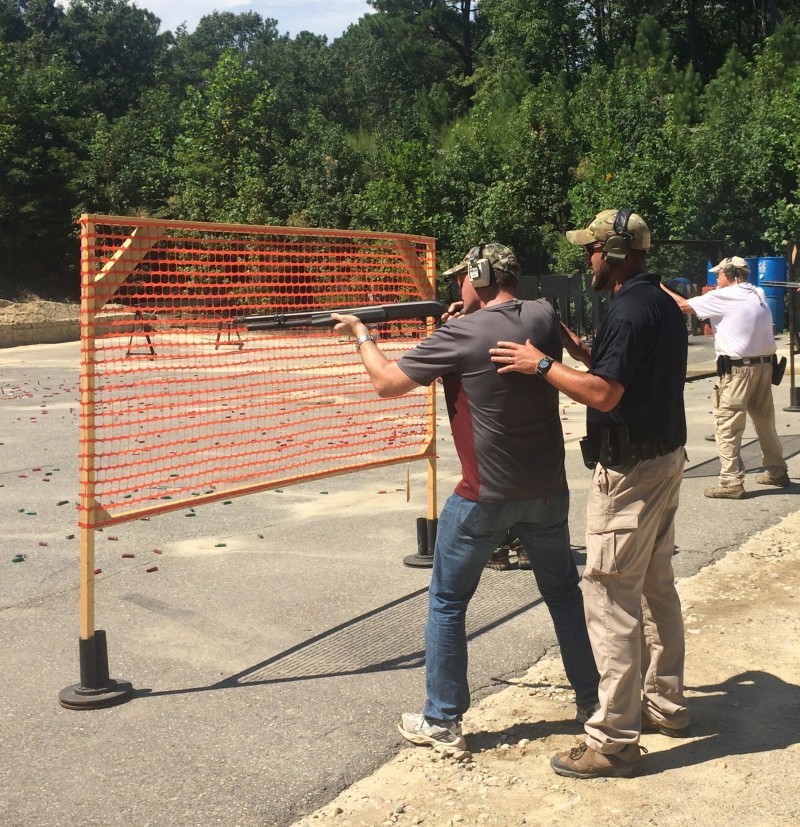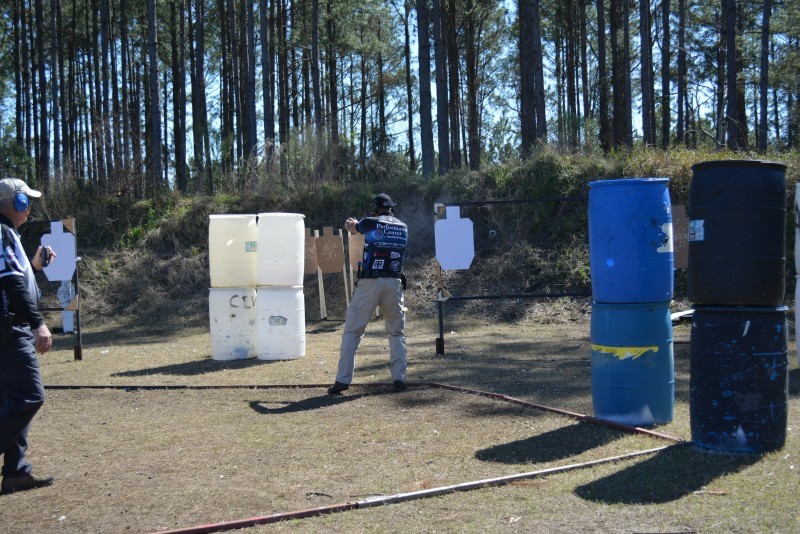No matter what level your students might be on, everyone is looking to get faster and more accurate. There are so many little components that go into a competition stage that each one has to be evaluated and practiced to be perfect. So how do you, the training company, help provide tools for your customers to get to the next level?
Students can achieve the fundamental foundations of shooting by taking shooting classes from experienced instructors from both the tactical and competition world. But just because your instructor is the best shooter you have, he or she might not be a good competition shooter. In order to really excel in the competition world, you must train under a professional shooter — a shooter who has been able to achieve some of the highest honors in that discipline of shooting. They have proven that they have what it takes to get to that next level.
So the methods taught in their classes are usually the skills and drills that made them so good. Just putting in the time might not always do it. There are a lot of good shooters who can do a couple of drills well, but the people who you might be looking for, can put it all together.
As a training company, bringing in an outside instructor is a good thing. This can keep the news, techniques and interest fresh. Sometimes the instructor might have a following on social media, so this could be a great way for your company to get exposure and to bring people in that do not normally attend your courses. Make sure you have some material for the students to take away that explains some of the courses you offer and the cost.
When bringing in an outside instructor, you must do your research as to the credibility of the level of instructor they are. Ask yourself, will the skills that this instructor brings benefit the students attending? Sometimes the price tag can be a little intimidating, but you get what you pay for. You don’t want to sacrifice the level of instruction because you want to save a dollar or two.
If you find a low-level shooter teaching the secrets of how to play the game, then your question should be, “Why haven’t you made it to the top?” Could a lower class shooter possess the knowledge of how to get there? Sure. The technique can be as simple as put the sight on the target and pull the trigger. Does that statement tell you a lot? A high-level, experienced shooter can break that down further to be able to convey what the focus is, the why and what exactly he is seeing on the gun.
Now if you’re lucky enough to have a high-level shooter (Grand Master — USPSA, Distinguished Master — IDPA, or on the Pro-Series 3GUN) on your staff, you’re all set. If not, then you might want to see if there is a demand for one to offer a competition curriculum.
World class shooters like Max Michel, JJ Racaza, KC Eusebio, Julie Golob and of course “The Great One” Rob Leatham hold classes to help support this need. All of these shooters have multiple national and world titles under their belt and all bring a different flavor to the mix. It’s good to see different types of shooters that have put in the hard work and dedication to the sport to see what drives them to be great.
Aside from the mechanics of how they handle the gun, your students should be able to take away what drills the pros like to run and why, how fast is fast, and how do they stay focused to keep that high level of performance up. I asked Rob Leatham one time how does he transition targets so fast.
He replied, “Brandon its easy. I put the sight on the target and pull the trigger, I then move the gun and repeat.”
Wait, that’s it? No special equipment, no magic pill, no special technique?
After my mind was blown, I realized that it’s a combination of hard work and shooting with people who are far more experienced than you that will get you to the next level. I had thought for so long that they (pro shooters) were doing something that I wasn’t — that the techniques they used were completely different and that’s what caused them to be so fast. But they’re not.
All of these professionals follow the same shooting fundamentals that everyone else does. They just tweak a couple of them to be able to blend the speed and accuracy.
While your company might teach the basics of stance, grip, sights (alignment and picture) and trigger control, advanced skills come from executing the fundamentals of shooting faster. There are two things a professional shooter will focus on to achieve the speed they’re looking for: sight picture and trigger control.
Although all the fundamentals are necessary, sight picture and trigger control directly affect speed and accuracy. Stance can change based on the position or movement that must be done on the stage. And the grip you establish on the gun from the holster always stays the same. Both elements are important, and your students need a solid foundation before being eligible for an advanced class.
Competition-related concepts dealing with target focused shooting and slapping the trigger will challenge your students. In basic courses, the instructor tells students to never slap the trigger and always focus on the front sight. But to shoot faster, you have to learn to pull the trigger faster and see a little less on the sight.
Speed also comes from how fast your hands and body can move. Hand speed makes a draw and reload fast, while body movement makes a set up and transition fast. All these components together make for a fast stage run.
But accuracy comes from what you see on the sights. How much sight picture do you need for a shot you’re getting ready to take, and how will you manipulate the trigger in order to effectively hit that target?
Professional shooters tend to “see the sights” a little differently than most. Instead of looking for a perfect sight picture, they look for an acceptable sight picture. Of course, this is all based on the size of target, difficulty of the shot and the distance to the target. So basically, big targets get shot faster and smaller targets get shot slower. Again, this sounds pretty obvious, but to truly understand what “more time” means is what you are paying the money for. And nothing beats the instructor watching your students shoot and being able to give direct feedback to see where exactly you can improve your skills and focus.
Just seeing the things that a true professional can do in person is something worth watching. If you’ve never seen a 1-second reload, then you’re really missing out — or even a draw and a reload completed in around 1.5 seconds; that’s total time for both manipulations.
Most of us are visual learners and watching the skills being demonstrated will help you understand the mechanics it takes to execute at that level. It’s about seeing, knowing and comparing yourself to someone who is just better than you. If a student knows he can actually achieve a 1.5-second draw and reload, it’ll likely motivate him and create a hunger for your students to want to learn and practice more.
Competition shooting is sweeping the nation. With Americans more and more concerned about their personal security, people are arming themselves and learning how to handle their firearms. Some students take the tactics they learn from an instructor and the skills to shoot faster from a competition shooter and blend the two for a great end result.
After all, the top special operations units don’t bring these types of professional shooters in because they are teaching tactics or standard operating procedures. They bring them in because the military wants their operators to be able shoot faster and maintain the same deadly accuracy.
Brandon Wright is a top-rated competition shooter and the president of Wright Shooting Concepts.








